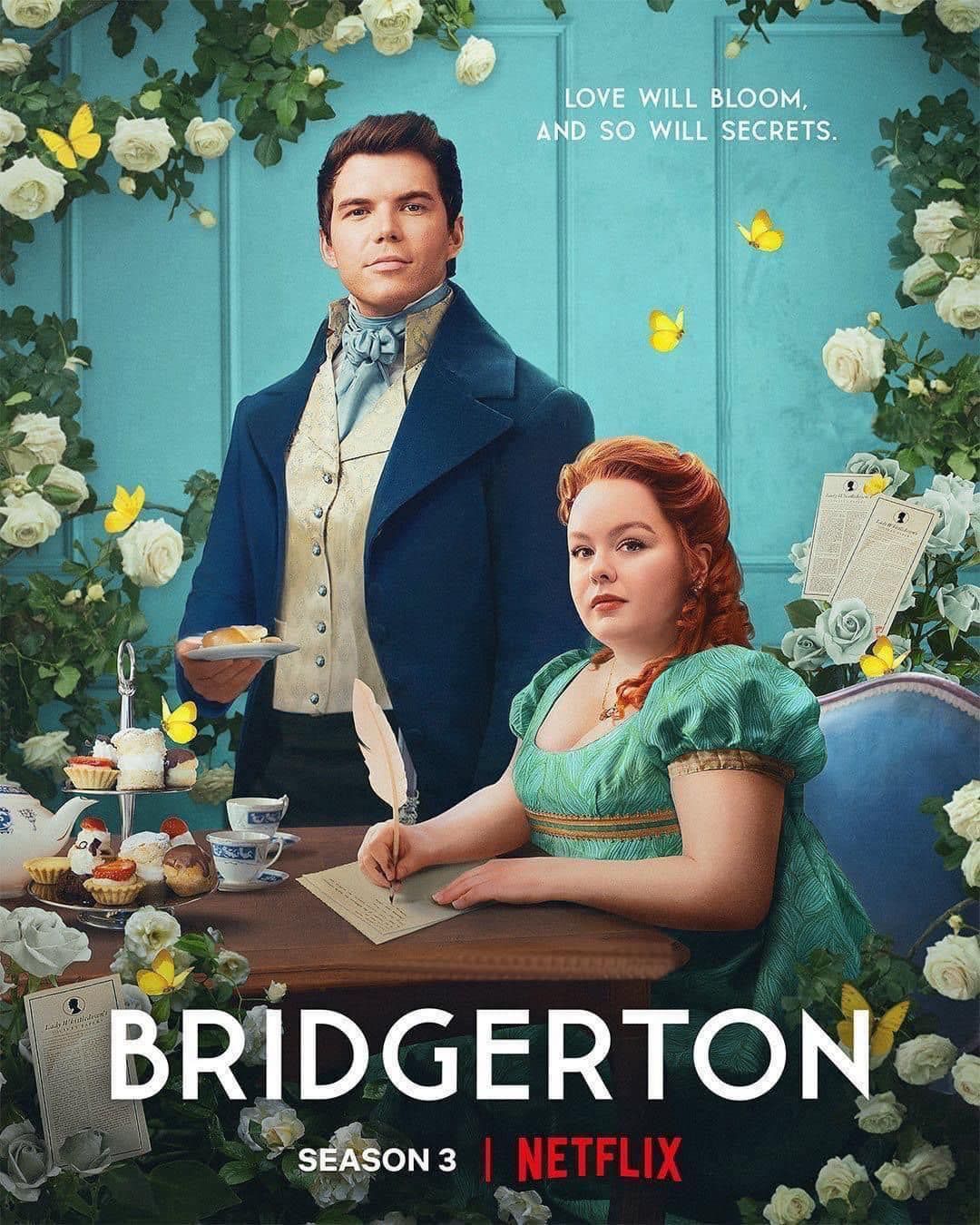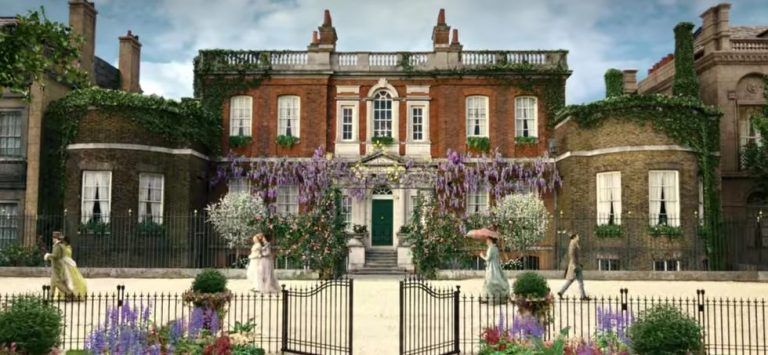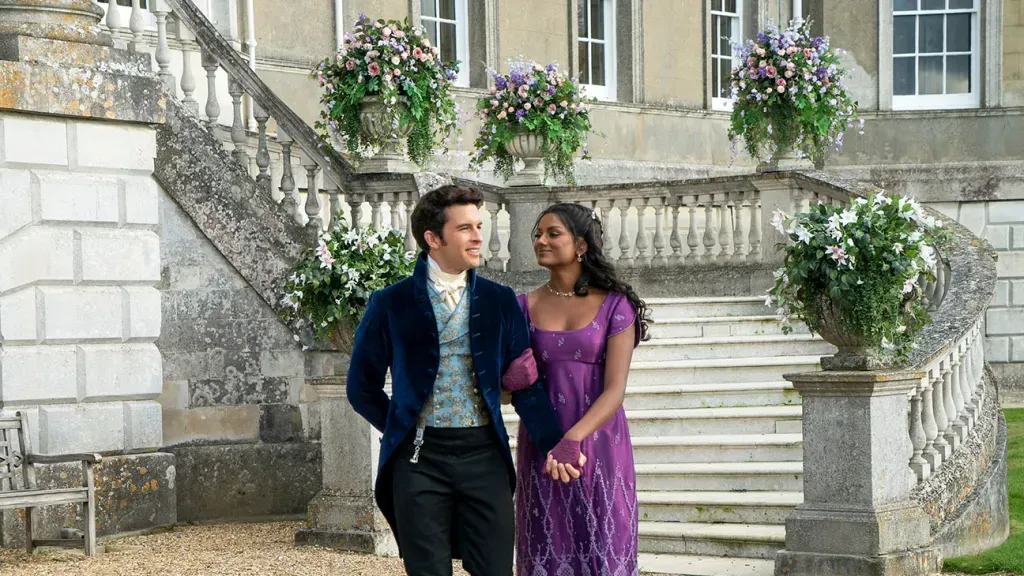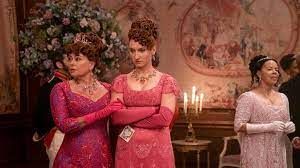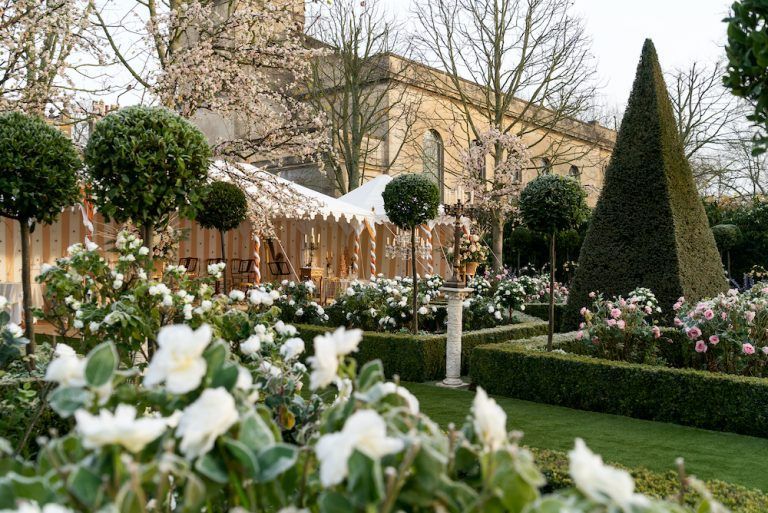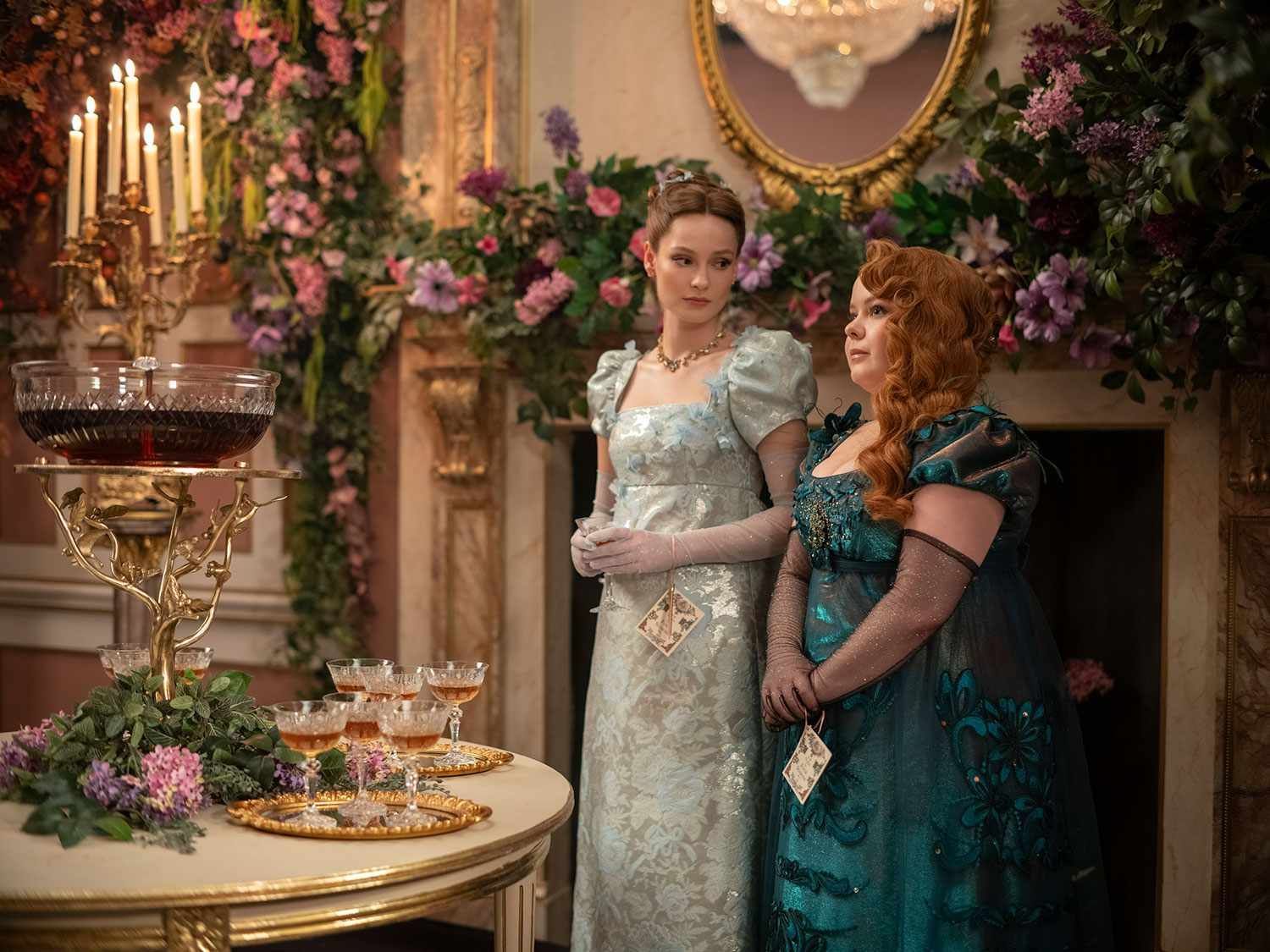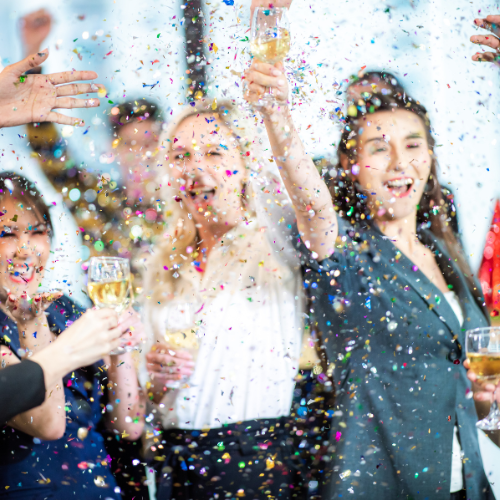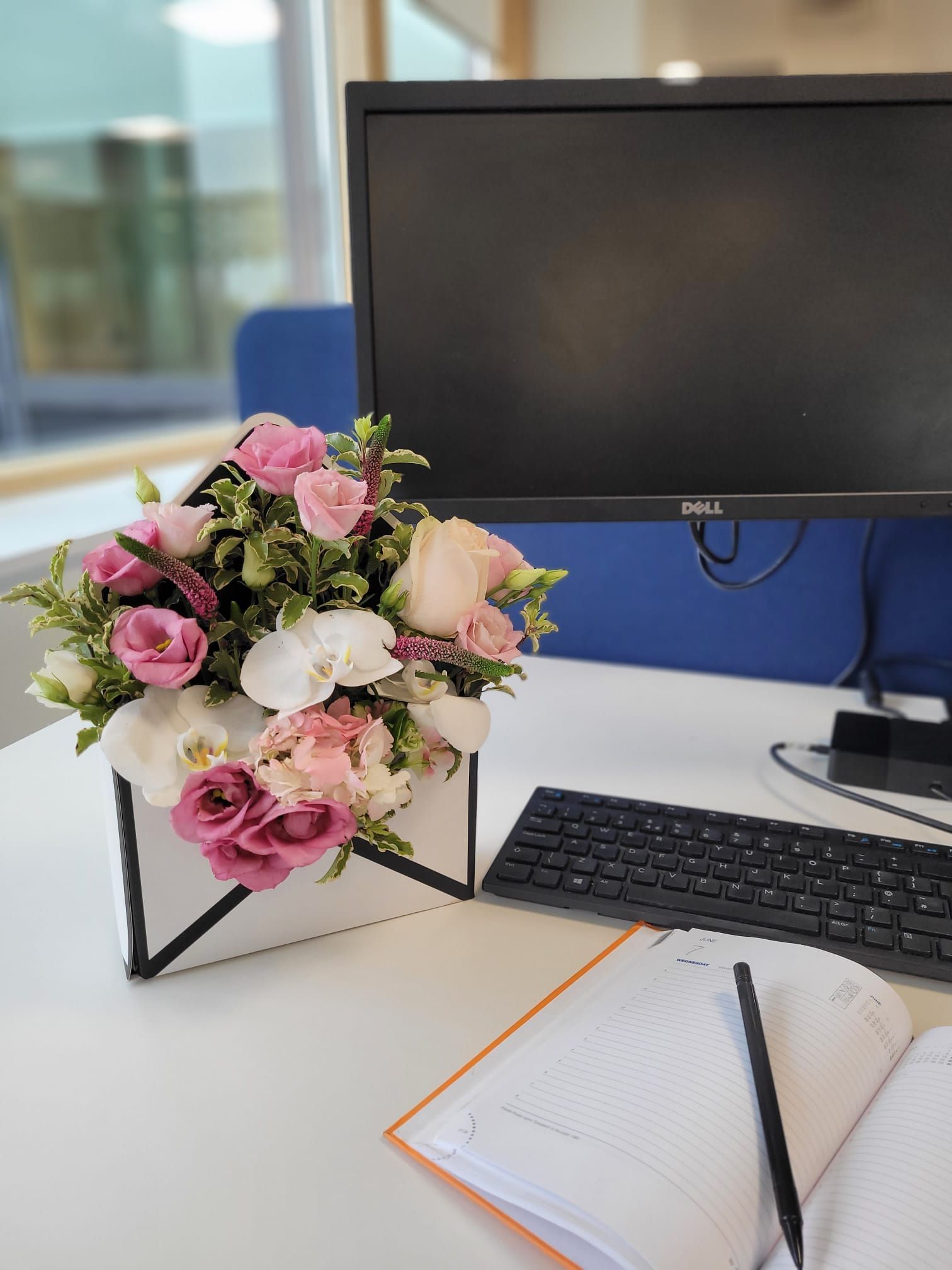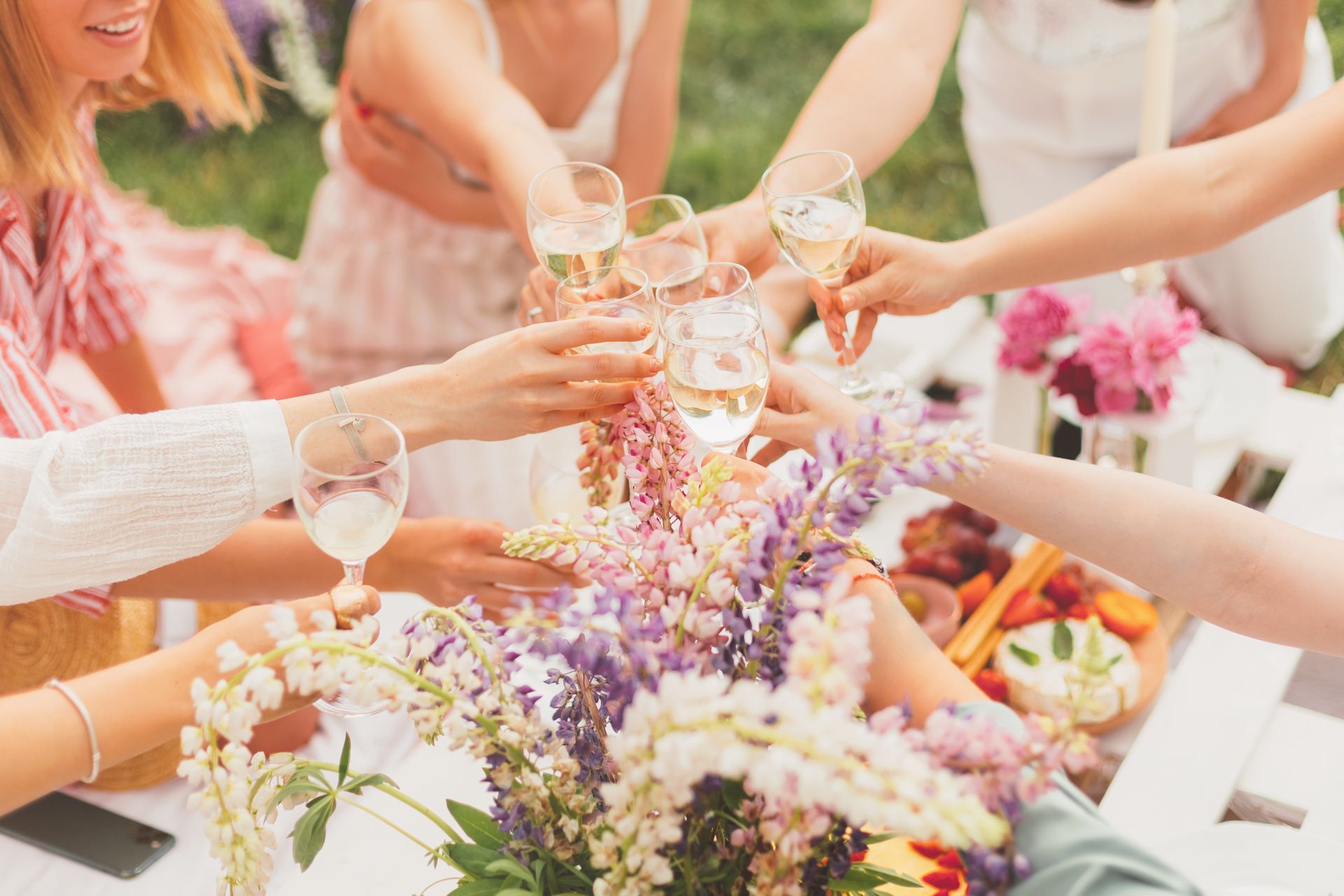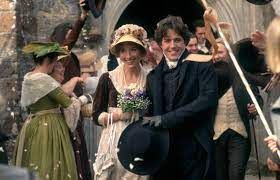Of course, a substantial amount of the flowers were not real, according to the Series 2 Production Designer, Will Hughes Jones, where artificial flowers were needed for practical reasons. For example, an indoor set full of lights, cameras and people can become a virtual hothouse in which cut flowers would literally wither while filming. They did ensure that fresh flowers were used where they were in close contact with the actors, for example, the posies that were brought by Daphne’s long line of suitors in Season 1.
Seasonal issues also affected the use of fresh flowers. In one scene being filmed in June, Chris Van Dusen the Showrunner, wanted a field of daffodils which of course was impossible, so they brought in over 5000 artificial daffodils which were placed in the field manually. For another scene which would require Hyacinths in August, and artificial Hyacinths were not available, they found a Dutch flower farmer who force grew hundreds of Hyacinths. Now that’s attention to detail!
